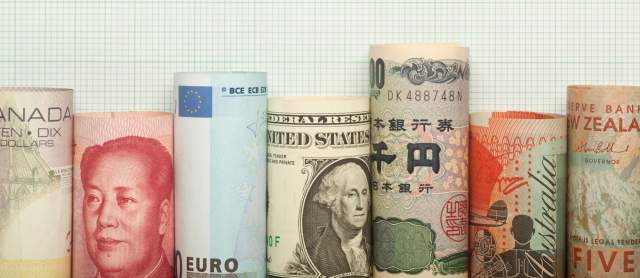You may already be familiar with the concept of foreign exchange but not know where to start when trying to dive deeper into learning about it.
We’re here to help explain foreign exchange rate basics as well as related terms.
What is the foreign exchange rate?
The foreign exchange rate, also known as the FX rate, is the ratio between a pair of currencies that shows how much of one exchanges for the other. Due to both the ebb and flow of currency demand and round-the-clock trading, FX rates fluctuate regularly. These rates are set and quoted by the foreign exchange markets.
The foreign exchange market is the world’s largest and most liquid financial market, with volumes exceeding all global equity and fixed income volumes combined. Trading takes place 24 hours a day, opening Monday morning in New Zealand and closing Friday evening in the United States. Learn more about how foreign exchange rates affect businesses.
What are currency codes?
For easy identification, each currency is assigned a unique currency code consisting of three letters. For example, US Dollar is USD, Chinese Yuan is CNY, and the Great Britain Pound is GBP.
See a full list of currency codes.
Two different styles exist for displaying currency: American Currency Quotation and European Currency Quotation. The American Currency Quotation shows how many USD it takes to purchase one unit of foreign currency. For example, EUR/USD = 1.10 => 1.10 USD per 1 EUR.
On the other hand, the European Currency Quotation shows how much foreign currency is needed to purchase one unit of USD. For example, USD/JPY = 110 => 110 JPY per 1 USD. Most of the world’s currencies follow European Currency Quotation for trade purposes, with the exception of EUR, GBP, and AUD, among others.
What are bid and ask quotes?
A market maker is a company or person that provides the market with two prices: a buy and sell quote for a currency. So, if the rate for EUR/USD is 1.09/1.11, then 1.09 is the market maker’s bid quote, which is the market maker’s buying price for the base currency (EUR in this case). 1.11 would be the market maker’s ask quote, which is the market maker’s selling price for the base currency.
What is FX risk, and how does FX hedging work?
FX rates fluctuate regularly, which leads to an uncertainty of outcome. In order to reduce or eliminate uncertainty caused by FX rate fluctuations, a company can implement FX hedging, which involves taking on an FX risk to neutralize another one. Contracts used for FX hedging include FX forwards, swaps, and options.
While understanding foreign exchange rates and market dynamics is crucial, it is equally important to consider practical aspects like invoicing and managing exchange rate risks. These factors can significantly impact your business operations and financial stability.
Choosing the invoicing currency
First, decide whether you want to invoice in your home currency or the local currency of your customer. One of the major benefits of invoicing in your home currency is the simplification of your accounting process. However, you may also expose your customer to exchange rate risks and in turn affect your competitiveness. Conversely, choosing to invoice in your customer’s local currency helps make payments easier for them, but will require you to manage the currency conversion
Determining the exchange rate
You have two primary options for setting exchange rates: Fixed or Real-time rates.
- Fixed rates: Agreeing on a fixed exchange rate at the time of the contract can help provide certainty for both you and your customer. The fixed rate can be based on the current market rate or an agreed-upon rate between involved parties. However, be aware that significant currency fluctuations between invoicing and payment dates could impact your profitability.
- Real-time rates: Using real-time exchange rates ensures that the conversion reflects the current market rate at the time of payment. This approach can protect your margins from adverse currency movements but introduces variability for your customers, who might face higher costs than initially expected.
Mitigating currency fluctuation risks
To minimize the impact of currency fluctuations, consider the following strategies:
- Forward contracts: These financial instruments allow you to lock in an exchange rate for a future date, providing predictability and protection against unfavorable rate movements.
- Currency hedging: This involves using various financial instruments and strategies to offset potential losses from currency fluctuations. Consult with a financial advisor to develop a hedging strategy tailored to suit your business needs.
- Multi-currency accounts: Opening multi-currency bank accounts enables you to receive and hold funds in different currencies, reducing the need for immediate conversion and giving you more control over when and how to exchange currencies.
By carefully choosing your invoicing currency, setting appropriate exchange rates, and implementing strategies to mitigate currency risks, your business can navigate the complexities of international transactions more effectively.
How to evaluate Flywire’s FX rates
Flywire and its locally licensed partners offer competitive exchange rates that are often lower than what banks offer for retail consumers. It’s important that payers who want to review Flywire’s rates do so by comparing them to their bank’s retail rates, rather than those found online. The exchange rates posted on many websites online are often the mid-market rates, which are not always available to the retail consumer. Because exchange rates are in constant flux, the rates should be compared at the same time ideally.

